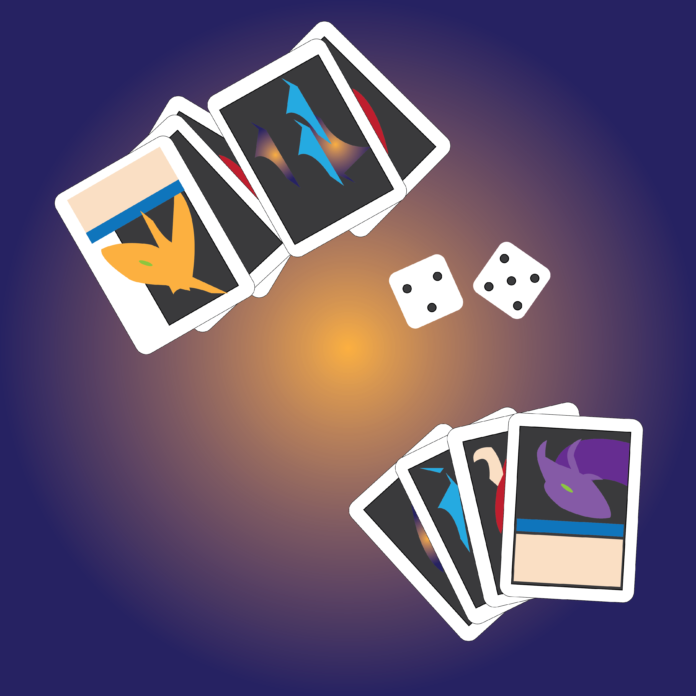If its recent resurgence has not convinced you to try out Dungeons and Dragons, there are still plenty of reasons to explore the role-play genre
By ADHITHI ANJALI — arts@theaggie.org
The Dungeons and Dragons (D&D) resurgence has just begun to taper off after capturing the interests of mainstream culture in 2016. There aren’t many new sources of media concerning the topic rising in popularity, but the ones that already exploded into fame have since become staples of the genre — shows like “Critical Role,” “Not Another D&D Podcast,” “The Adventure Zone” and “Dimension 20” all crop up as the best D&D live-play shows to watch. According to ScreenRant, D&D saw sales jump by 33% in 2020.
However, though few new shows of the like are surging into the mainstream and sales have not hit quite as high since their peak, it is worthwhile to note that the reasons for its popularity remain. Even further, these reasons show how other tabletop role-playing games (TTRPGs) might provide a better platform for unique storytelling.
TTRPGs are, essentially, live-action games in which players take on the role of a character and act as such. Their appeal seems to stem from the amassing of friends around a table to participate in creating a wholly unique experience. Looking to D&D as a popular example, another one of the draws of TTRPGs is the friendly side conversations and antics that usually ensue while playing, leading to uproarious laughter and a sense of community bonding.
However, on an individual level, TTRPGs have allowed people a new sense of agency over storytelling. In comparison to mediums like film, books or traditional video games — all of which have varied, but more static, senses of closeness with the audience — TTRPGs allow for more audience influence on their plot, as they step into the roles of writer and player.
The players are the first and final decision makers, exemplified by the idea of “homebrewed” rules and items. “Homebrewing” is the addition of anything not from the original source material that is added into an individual game, allowing for even more creative control.
The unique level of player agency in TTRPGs allows you to design stories you desire to see within the confines of a game system that prompts development. This differs from other media, such as video games, where the advertised player agency can feel too fabricated or meaningless. For example, games by prominent company Telltale have often succumbed to a singular ending, despite promoting themselves as dependent on player choice. Ultimately, many of these game designers had a complete story to tell that would exist with or without player influence.
On the other hand, because the story of a TTRPG cannot exist without active player participation, they can be the perfect medium for those of us who feel the stories around us are lacking; whether it be in diverse representations of race, gender and sexuality — or simply not featuring enough dragons.
For “Coyote & Crow” creator Conner Alexander, the medium allows for a sandbox-like approach to a highly unique and futuristic Indigenous world. In an interview with Mojo Nation, Alexander sees a shift in the way people interact with TTRPGs today, saying “People don’t just want mechanics anymore; they want theme […] it’s bringing people closer to [role-playing games] in a way that they’re comfortable with and the idea of telling stories around a table speaks across all cultures.”
Here we see the effect of the merging audience-creator relationship, where the function of the game itself has been altered in order to cater to the stories of marginalized communities. The popular dynamics of a D&D game can still fail to allow your story to flourish, but hopefully, its resurgence has opened the space for exploration into the world beyond D&D.
D&D has made it seem as if all TTRPGs require seven different dice and a hankering for strict rules and mechanics, but not all subscribe to this method of play. If the barrier to entry seems a little daunting, another popular game is the gothic “Vampire: The Masquerade,” which only uses one ten-sided die to tell the story of the eternal conflict between human and beast. For a short rulebook, “Honey Heist” is a fun alternative where you play as bears vying for the ultimate prize: honey. For fans of “Redwall” as a child, “Mouse Guard” provides a fantastical backdrop of wondrously tiny proportion.
If you still cannot find a play style that suits you, the world of TTRPGs is no stranger to mixing and matching rulebooks as you and your party see fit. The confines of the system only rule the game as long as you let them; truthfully, there are an incredible amount of ways for all of us to take advantage of our creativity at our own dining tables.
Written by: Adhithi Anjali — arts@theaggie.org




